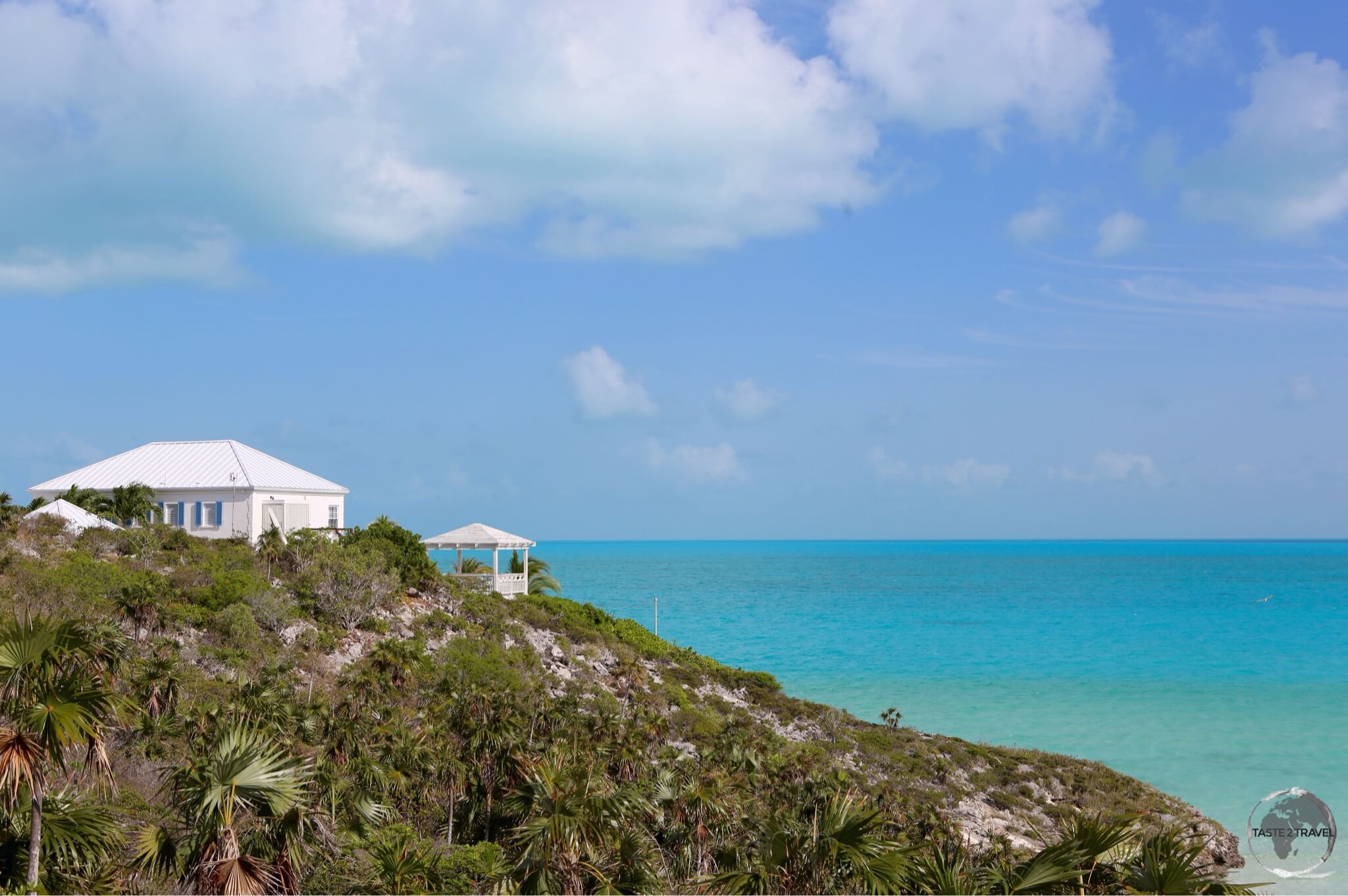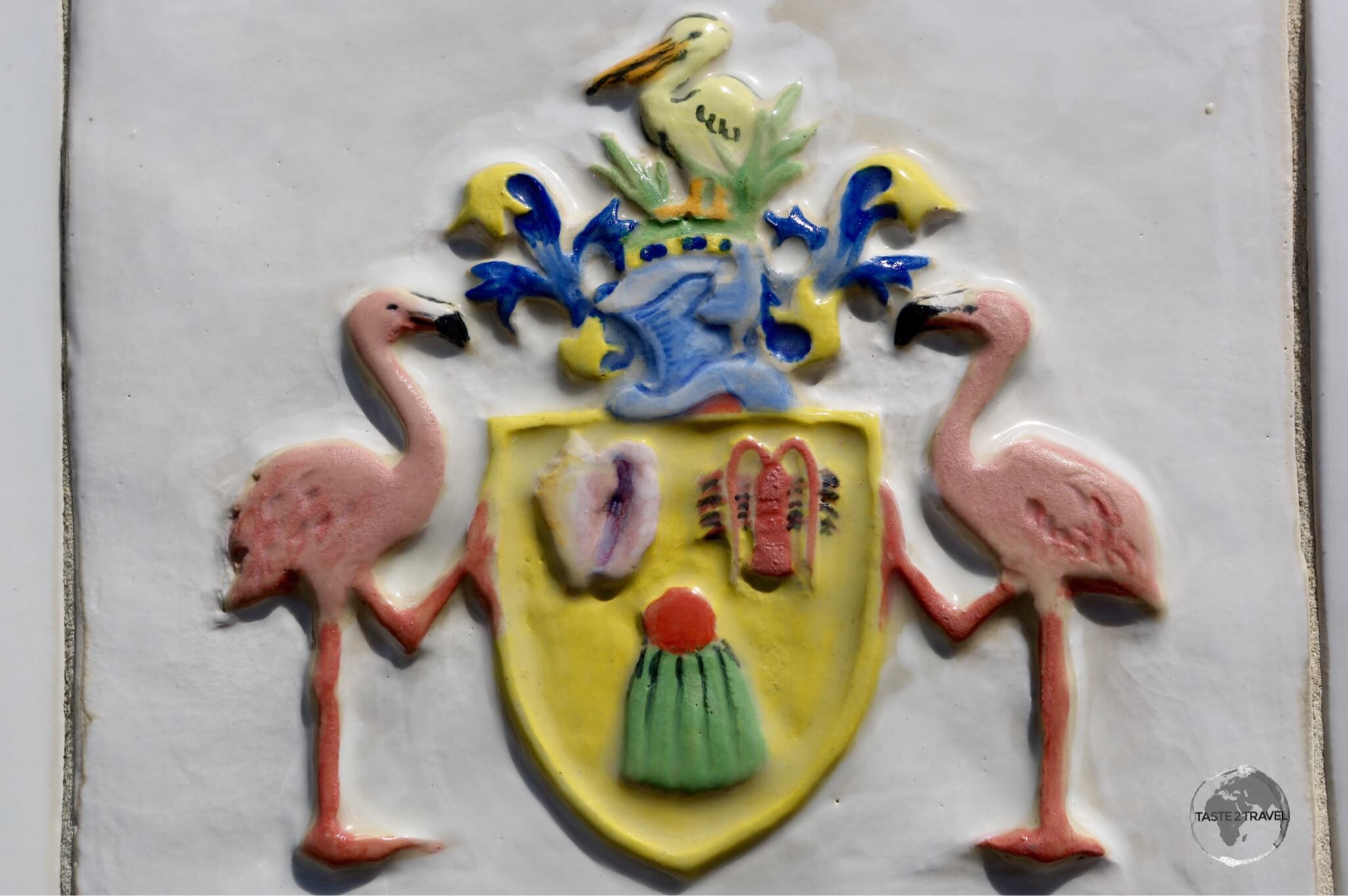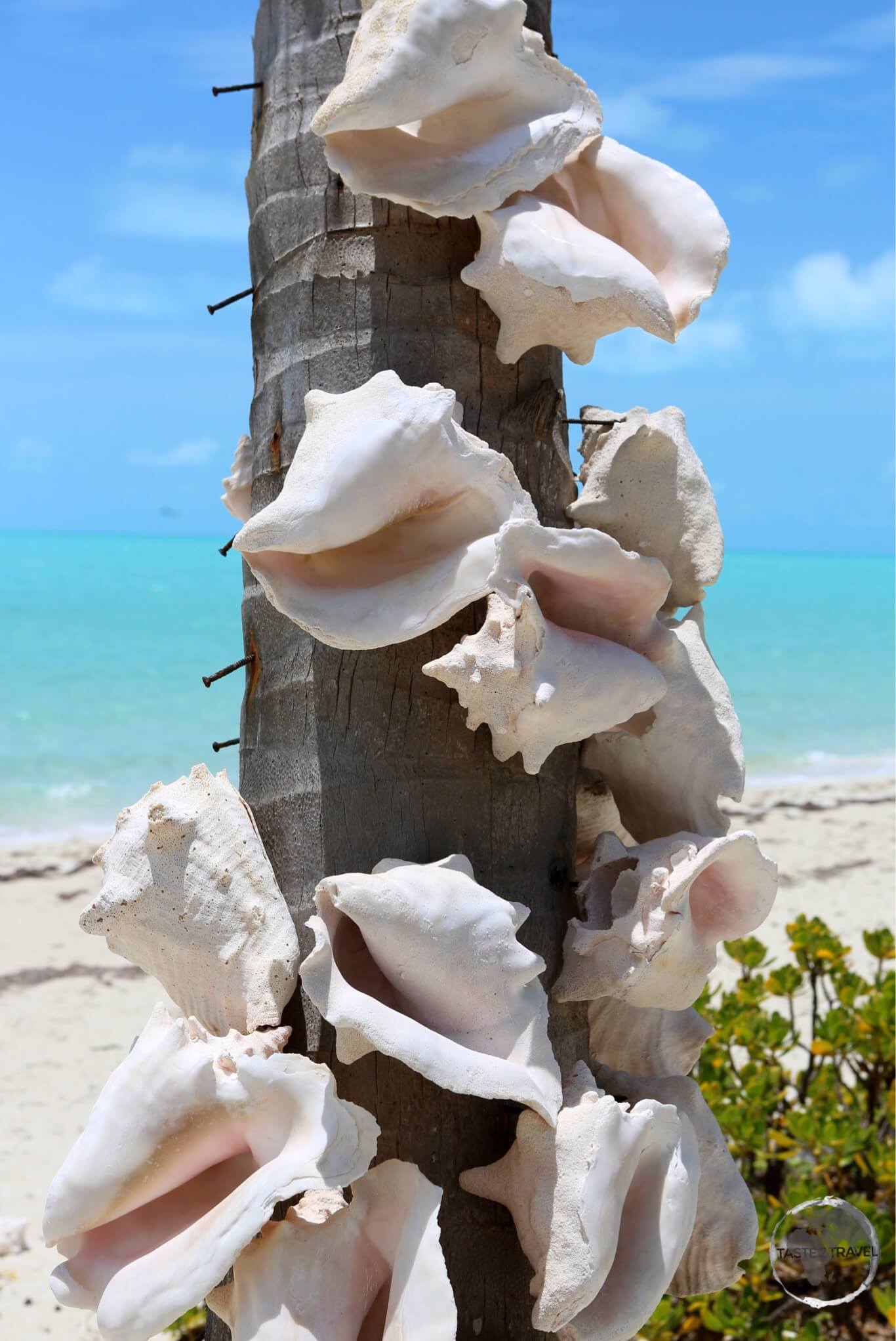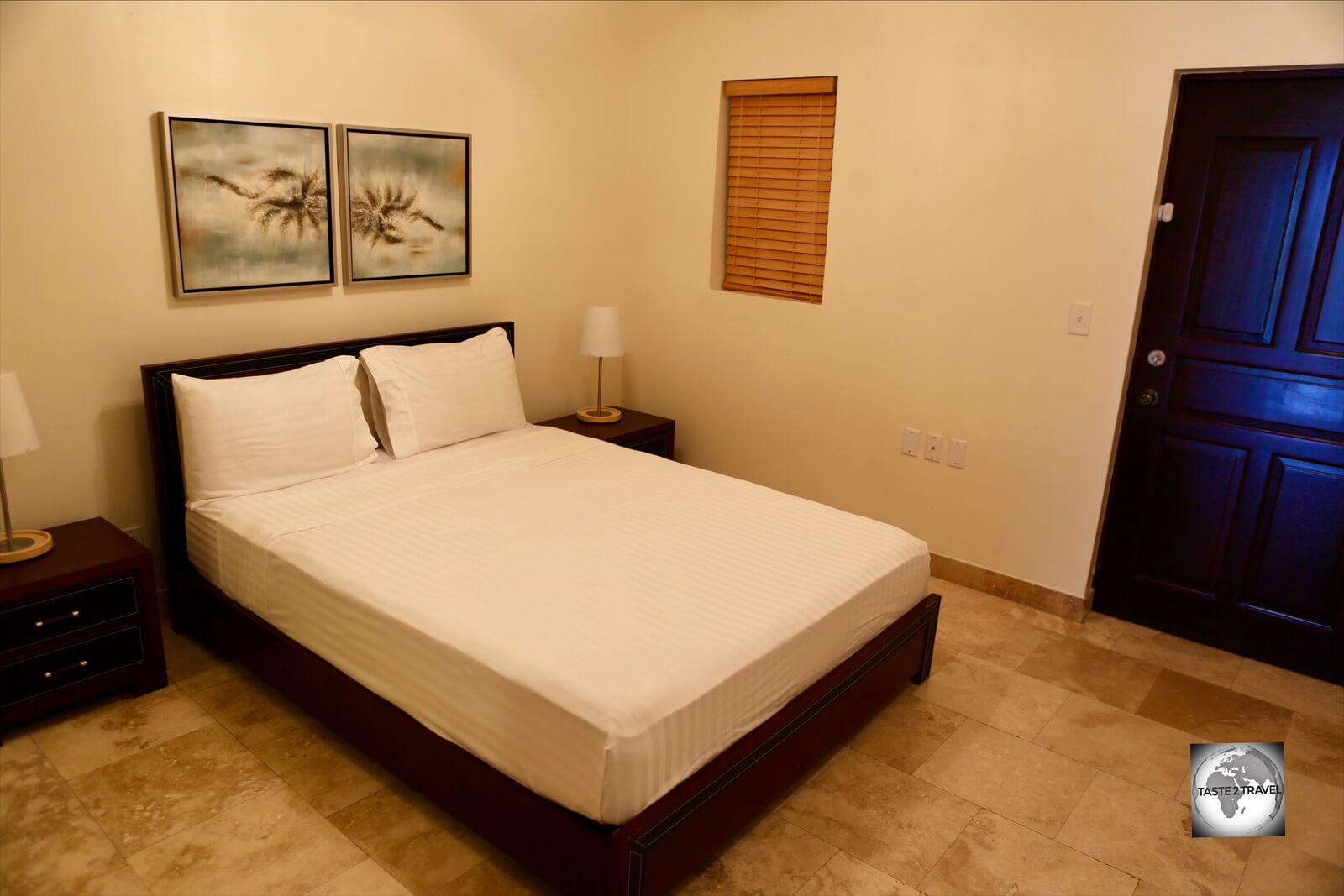Turks and Caicos Travel Guide
Welcome to the taste2travel Turks and Caicos Travel Guide!
Date Visited: June 2015
Introduction
Located north of the well-beaten ‘Caribbean-island-hopping’ trail, the Turks and Caicos Islands (TCI) are a British Overseas Territory who share the tail-end of the Lucayan Archipelago with neighbouring Bahamas. The islands reputedly get their name from the Turk’s Head Cactus, which can be found growing in the arid soil.

A raised limestone shelf, Provo island is surrounded by pristine turquoise water.
TCI consists of 40 islands and cays spread over 60-km of brilliantly azure turquoise waters. Only eight of the islands are inhabited. The islands have a total population of 31,000 residents but welcome about 450,000 air travelers and 650,000 cruise ship passengers per year.
The two main islands are Grand Turk and Providenciales. This report covers Providenciales Island – more commonly known as Provo Island.

Stormy skies over ‘The Bight’ beach, one of the best beaches on Provo island.
Provo is the most developed of the islands and is where most international passengers arrive. The island consists primarily of low, flat limestone and is ringed by white sand beaches. Provo is 37-km long and 7-km wide. Getting around is a breeze thanks to light traffic, courteous drivers, excellent roads and lots of signage. There is no public transport so a car is essential if you wish to explore.

Turks head cactus on Provo island.
Location
TKCA 1ZZ, Turks and Caicos Islands
The Turks and Caicos Islands are located in the Atlantic Ocean and not the Caribbean sea. The islands lie 925-km south-east of Florida, 144-km north of the island of Hispaniola and are separated from the closest Bahamian islands (Mayaguana and Great Inagua) by the Caicos Passage.

A view over the south coast of Provo island.
History

A British canon on Provo Island.
As with most other islands in the region, the first inhabitants of TCI were the indigenous Taino Indians. These were Arawak-speaking Indians who migrated through the Antilles islands from present day Venezuela. The Taino crossed to TCI from neigbouring Hispaniola sometime between AD 500 to 800. Together with Taino who migrated from Cuba to the southern Bahamas around the same time, these people developed as the Lucayan.
The first European to visit the islands was Christopher Columbus who set foot on Grand Turk during his first voyage to the Americas in 1492. No settlement was made and the next contact would not come until 1512, when Juan Ponce de Leon visited the islands. Once discovered, Spanish slavers from neighbouring Hispaniola frequently raided the islands, enslaving the Tainos to replace the largely depleted native population of Hispaniola. Due to these raids, the southern Bahama Islands and the TCI were completely depopulated by 1513, and remained so until the 17th century.

Dry and arid, Provo island is covered with different species of cacti.
During the 16th, 17th and 18th centuries, the islands passed from Spanish, to French to British control, but none of the three powers ever established any settlements.
The first temporary settlements on the island were made by seasonal salt workers from Bermuda in 1681. The salt collectors were drawn by the shallow waters around the islands that made salt mining a much easier process than in Bermuda. They occupied the islands for six months a year, returning to Bermuda when it was no longer viable to harvest salt. Their early presence established the British dominance of the archipelago that has lasted into the present day. Huge numbers of trees were felled by the Bermudians to discourage rainfall that would adversely affect the salt mining operation. This deforestation has yet to be repaired.
Salt mining on TCI was a key industry for both Bermuda and the Bahamas. During much of the 18th century a virtual ‘state-of-war’ existed between the two British colonies, both of whom were involved in a protracted legal battle over ownership of TCI and hence it’s salt pans.

A view over the south coast of Provo Island.
Due to a series of events, such as incursions by French privateers who raided salt-ladened ships, a couple of powerful hurricanes (which destroyed settlements, salt pans and ships) and the loss of their key U.S. market, the Bermudians slowly withdrew from TCI. The British government eventually assigned political control of the islands to the Bahamas.
The islands remained part of the Bahamas until 1848, when the inhabitants successfully petitioned to be made a separate colony governed by a council president under the supervision of the governor of Jamaica.
The islands continued to be a dependency of Jamaica until 1959 at which point they received their own administration. When Jamaica was granted independence from Britain in August 1962, the Turks and Caicos Islands became a crown colony.

The TCI coat of arms features the Turks Head cactus.
Until the 1960’s the islands had little economic activity and little population growth. At this time, a small trickle of tourists began to arrive, supplementing the salt economy. A group of American investors funded the construction of an airport on Provo (now the international gateway to the islands). They also built the island’s first hotel. This was the start of the tourism industry, which is now the main economic activity on the islands.

Another beautiful day on TCI.
Today the islands are a modern, developed and safe (with one of the lowest crime rates in the Caribbean) destination, albeit an expensive one. With a population of just 24,000, Provo is a relaxed, laid back place. The locals are respectful and courteous, traffic is never heavy and the magnificent white sand beaches are normally uncrowded.
TCI is a special destination – one for which it is definitely worth straying off the beaten track.
Flag

The flag of Turks and Caicos Islands.
The flag of the Turks and Caicos Islands features a blue background with the Union Jack on the upper hoist side. The flag is defaced with the coat of arms of the Turks and Caicos Islands in the centre-right.

The flag of TCI flying on Provo Island.
The coat of arms, which was granted on 28 September 1965, takes the shape of a yellow shield which contains a conch shell, lobster, and a Melocactus. The Melocactus, which is visually similar to the traditional Turkish fez, give the islands the first half of their name.
Currency

The US Dollar.
Despite being a British territory, the currency used on TCI is the US dollar. There are no Foreign exchanges or Bureau de Changes at the airport or anywhere apart from local banks. While ATMs are available, they are not always reliable.
It’s best to exchange any currency prior to arriving on the islands.
Offshore Finance

The Turks and Caicos have become a popular place for offshore investments. As a zero tax jurisdiction, investors incur no taxes and few restrictions on any monetary exchanges.
However, such lax laws have caused these islands (ultimately ruled by her Majesty) issues in the past. In the 1990’s, the islands gained negative press as the result of money laundering. However, after intervention by the British government, these problems have subsided.
Around Providenciales Island

Fringed by white sand beaches, Provo island is surrounded by the most dazzling, azure blue seas.
Grace Bay
Grace Bay is the main tourist centre on Provo. It all started in 1984 when Club Med opened a resort on the beautiful white sand beach. Grace Bay features a beautiful, white sand beach which stretches along the coast for 20-km. Most of the beach is occupied by exclusive resorts – a playground for wealthy holidaymakers. In the village you will find the largest concentration of restaurants, bars, cafés and shops on Provo. This is the place to come in the evening.
The Bight

The stunningly beautiful ‘The Bight’ beach, was located a short walk from my condo.
Located on the central north coast between Grace Bay and Turtle Cove is The Bight. This beach (2.5-km long) offers a wide sweep of white sand with calm, clear, turquoise water. There is little development along the beach so it’s never crowded.
Adjacent to one of the car parks is a small garden showcasing shrubs and plants native to TCI.

Stormy skies over The Bight beach.
Turtle Cove
Located on the north coast to the west of The Bight is Turtle Cove. The best beach snorkeling on Providenciales can be found 50-m offshore at Smith’s Reef. The reef is in protected, shallow water so is suitable for beginner snorkelers, but has enough sea life and reef to be of interest to any level of snorkeler.
Long Bay

Kite-boarding is a popular activity on windy Long Bay.
Located on the more exposed windward (southern) side of the island, Long Bay, is still largely undeveloped save for a large luxury resort at the northern tip of the beach. Due to its steady wind and relatively isolated location, Long Bay is rapidly becoming a popular kite-boarding destination in the Caribbean.

Conch shell decoration on Long Bay.
The beach offers 5-km of uninterrupted fine white sand. The water is shallow (one to two metres), crystal clear and calm. There are no facilities on the beach so you’ll need to bring everything you require. Parking can be found at the northern end of the beach, where a boardwalk leads from a car park to the beach.
Sapodilla Bay

The calm waters of Sapodilla Bay are popular with families.
Located on the south coast, in a wide, protected bay, Sapodilla Bay is a 275-metre long white sand beach. The water is very shallow, calm and clear and is a popular choice for families.

Colonial-era graffiti at Sapodilla Bay.
From the beach-side car park you can climb a small hill where you’ll see boulders which were graffiti-ed in the 19th century by shipwrecked sailors.
Accommodation

The balcony of my comfortable Condo on Provo island.
Ouch! Accommodation on TCI is not cheap. The islands have branded themselves as a luxury destination for the wealthy and romantic honeymooners. There are few budget options here. You can choose between an all-inclusive hotel, a resort, a condo or private villa. Don’t bother looking for a cheap hostel.

A view of my comfortable condo on Provo Island.
While on Provo, I stayed at La Vista Azul Resort, which is a condo complex located at beautiful Turtle Cove. The Bight and Smith’s Reef is a short walk away. The owners of the condo’s rent their properties out to visiting holiday makers. All of this is managed by the friendly onsite property manager.

The bedroom of my condo.
If you are keen to invest in a nice condo in a modern, developed, conducive tax-haven then you should consult him. I would totally recommend staying here if your budget can afford it. You can check current rates on booking.com
Eating Out
There are many restaurant options around the island, most of them concentrated in the tourist hub of Grace Bay. If there is a national food on TCI it must be Conch. Most restaurants offer Conch in different forms (fritters, salad etc).
Local cuisine mostly revolves around seafood, with many restaurants serving local fish. There are many international restaurants catering to the tastes of tourists, especially in Grace Bay. No matter what cuisine you are in the mood for – you will find it on Provo. One thing you will not find are American fast food chains (McDonald’s, KFC, Burger King etc).
Conch

A very slimy adult conch at the Caicos Conch Farm.
Popular throughout the Caribbean, Conch is a large sea snail which lives inside a shell. Caribbean Queen Conchs are farmed on Provo (the only commercial farm in the world) where they are raised to 4-years of age before being harvested. The meat is removed from the shell and traditionally used to make conch fritters.

Breeding enclosures at the Caicos Conch Farm.
The polished shell is used to make ornaments, jewellery and souvenirs, which you can buy from the gift shop at the farm.
Turks Head Beer

While on the island you should sample the offerings from the folks of the Turks Head Brewery. The brewery produces Lager, Amber and Stout beer using imported ingredients and desalinated island water. You can find the beers on tap at a number of bars in Grace Bay and around the island.
Visa Requirements
Some nationalities require visas for Turks & Caicos – check your visa requirements prior to arrival.
Getting There
By Air
Providenciales International Airport is the main international airport serving TCI and the main hub for the national carrier – InterCaribbean Airways.
There is an international airport on Grand Turk – JAGS McCartney International Airport – but it currently receives no scheduled international flights.
The following airlines provide international connections to TCI:
- Air Canada – services to Toronto (Pearson), seasonal service to Ottawa
- Air Canada Rouge – seasonal service to Montréal (Trudeau)
- American Airlines – services to Charlotte, Miami, New York (JFK), seasonal services to Boston, Dallas/Fort Worth, Philadelphia
- American Eagle – service to Miami
- British Airways – services to Antigua, London (Gatwick)
- Caicos Express Airways – services to Haiti (Cap-Haïtien), TCI (Grand Turk), TCI (Salt Cay)
- Delta Air Lines – service to Atlanta, seasonal services to Boston, New York (JFK)
- InterCaribbean Airways – services to Bahamas (Nassau), Cuba (Havana), Cuba (Santiago de Cuba), Dominican Republic (Puerto Plata), Dominican Republic (Santiago de los Caballeros), Dominican Republic (Santo Domingo), Haiti (Cap-Haïtien), Haiti (Port-au-Prince), Jamaica (Kingston), Puerto Rico, TCI (Grand Turk), TCI (South Caicos)
- JetBlue Airways – services to Fort Lauderdale, New York (JFK), seasonal service to Boston
- United Airlines – service to Newark, seasonal service to Chicago (O’Hare), Houston (Intercontinental)
- WestJet – service to Toronto (Pearson), seasonal service to Montréal (Trudeau)
By Sea
Ferry
There are no scheduled international ferry services.
Cruise Ships
Visiting cruise ships dock at the Grand Turk Cruise Centre on Grand Turk island.
No cruise ships dock on Provo.
Getting Around

Exploring the south coast of Provo island in my rental car.
Bus
There’s no organised public transportation on Providenciales.
Taxi
Taxis are metered and can be found on ranks at the airport or at the major resorts. If you require a taxi anywhere else you will have to call one.
Car

The license plate of my rental car on TCI.
This is the best way to explore the island. Without a car you will not get far. You can collect a car upon arrival at the international airport.
Driving conditions on the island are perfect – excellent roads, light traffic, good signage and (generally) courteous drivers.
Being a small narrow island it’s impossible to get lost. There is no need for navigation here.
Ferry
A regular ferry service operates from the eastern end of Provo (near to the Conch farm) to all three of the Caicos islands (North, Middle and South). The service is operated by TCI Ferries, check their website for the current schedule and fares.
That’s the end of my Turks and Caicos Travel Guide.
Safe Travels!
Darren
Follow me on Instagram:
[instagram-feed feed=1]
Further Reading
Other travel reports from the Caribbean region include:
- Anguilla
- Antigua & Barbuda
- Aruba
- Bahamas
- Barbados
- Bonaire
- Bermuda
- Cayman Islands
- Cuba
- Curaçao
- Dominica
- Dominican Republic
- Grenada
- Guadeloupe
- Haiti
- Jamaica
- Martinique
- Montserrat
- Puerto Rico
- Saba
- Saint Barthélemy (Saint Barts)
- Saint Eustatius (Statia)
- Saint Kitts & Nevis
- Saint Lucia
- Saint Martin/ Sint Maarten
- Saint Vincent & The Grenadines
- Trinidad & Tobago
- Virgin Islands (British)
- Virgin Islands (U.S.)
Turks and Caicos Travel Guide Turks and Caicos Travel Guide Turks and Caicos Travel Guide Turks and Caicos Travel Guide Turks and Caicos Travel Guide Turks and Caicos Travel Guide
Author: Darren McLean
Darren McLean is an Australian, full-time, digital nomad who has spent 37 years on a slow meander around the globe, visiting all seven continents, 192/ 193 UN countries and 245/ 251 UN+ countries and territories.
He founded taste2travel to pique one’s curiosity and inspire wanderlust.








beautiful place!
Thanks Sonia! Thanks for you our comment.
TCI is a beautiful destination. I know you would love the beaches and the conch fritters.